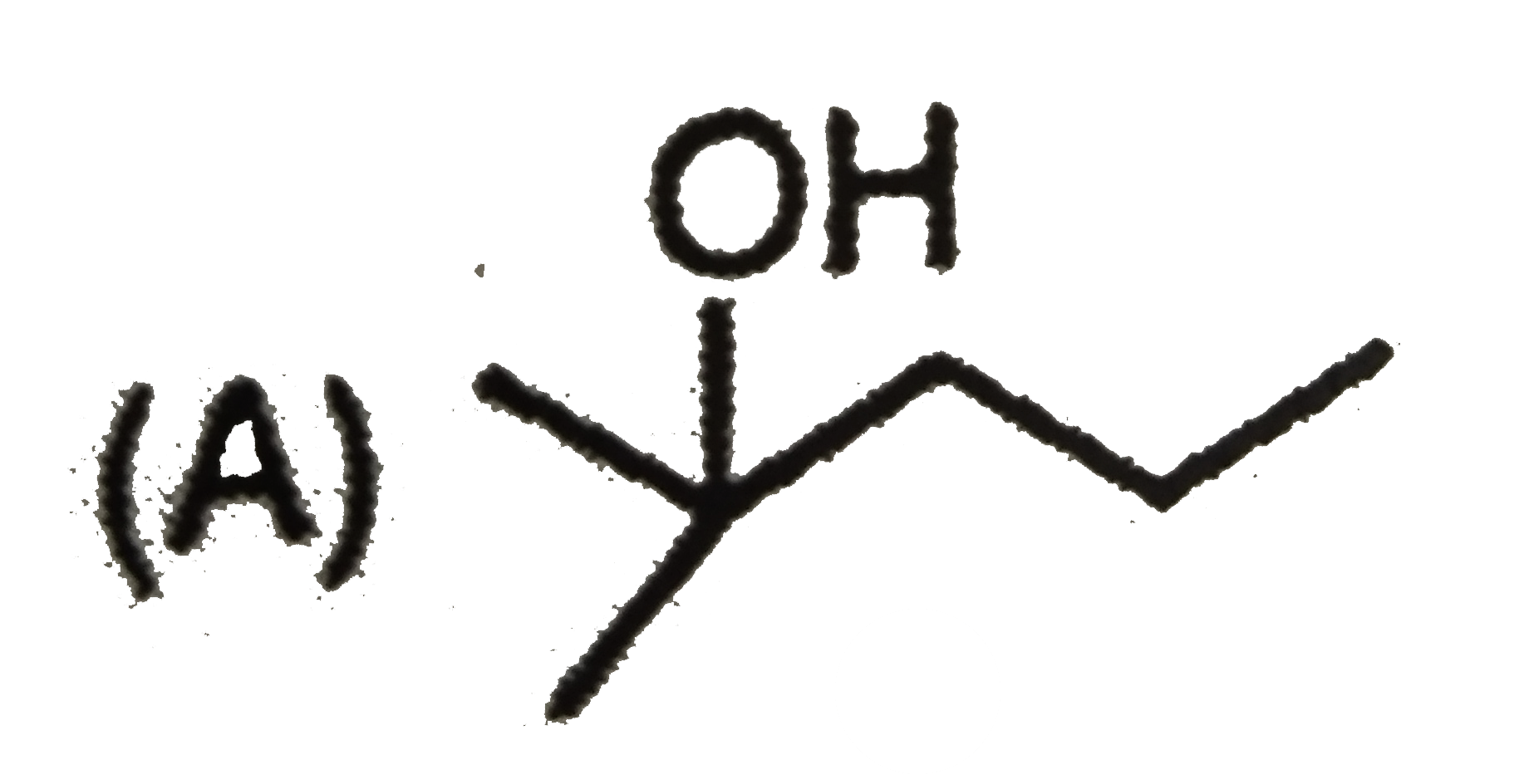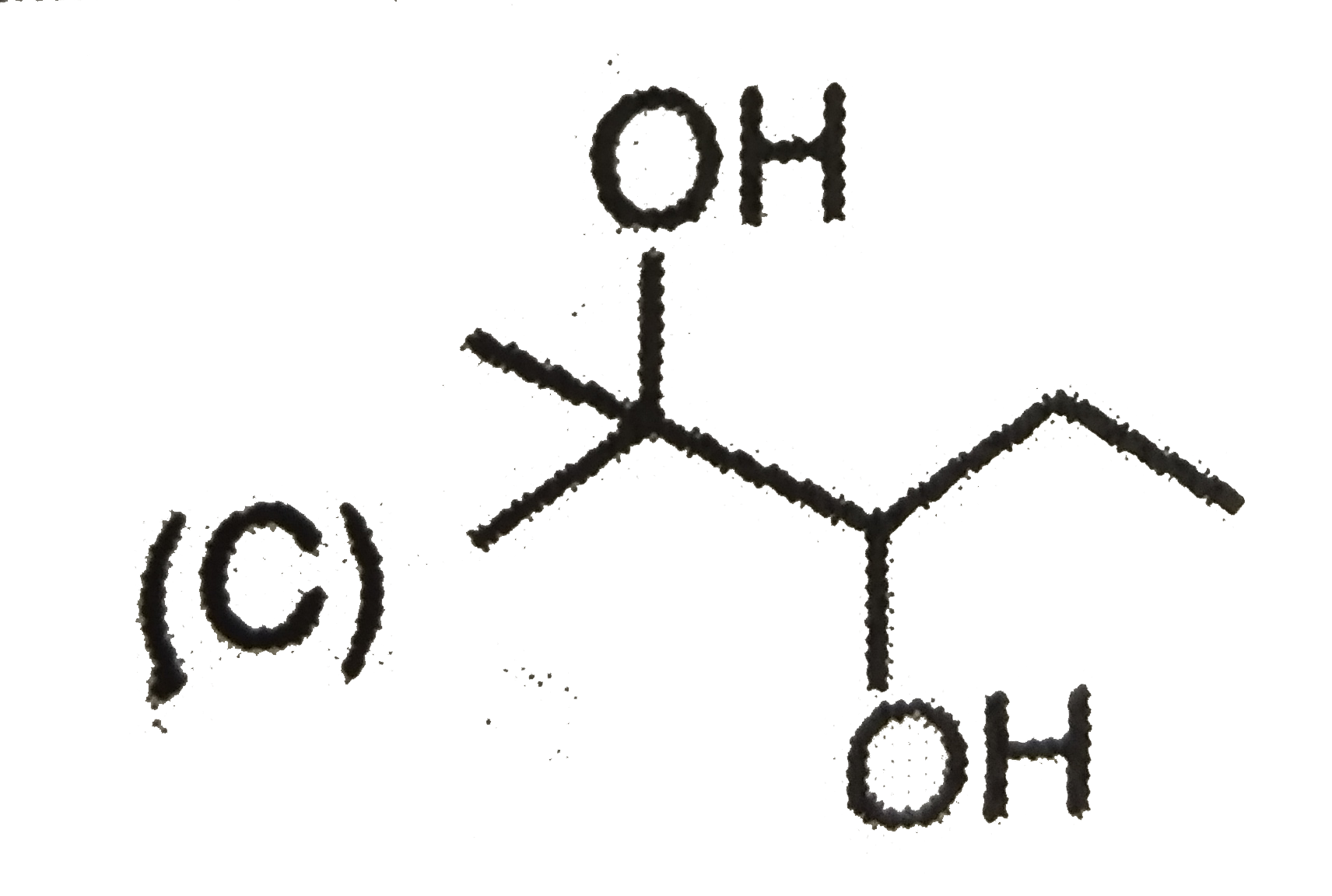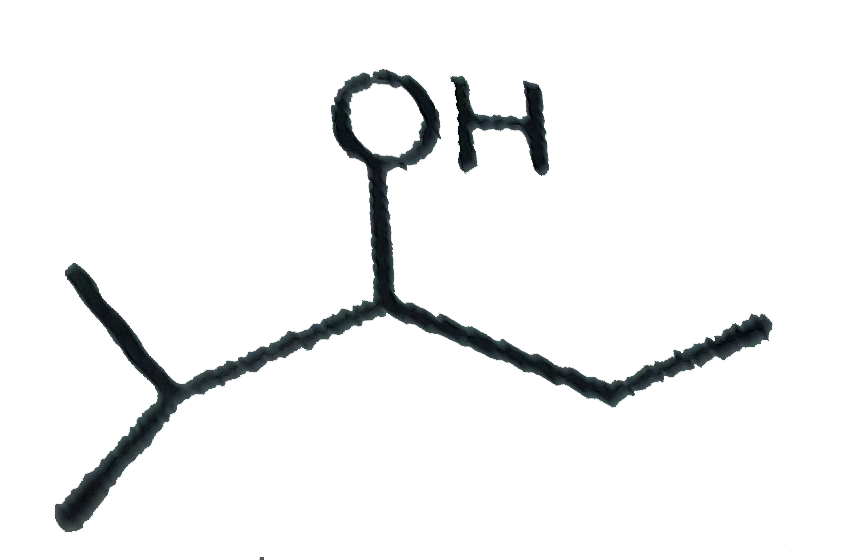The major product of the following reaction is :
(CH3)2C=CH−CH2−CH3(i)B2H6,ether(ii)H2O2,NaOH−−−−−−−−−−−−−−−−−−−−→




The correct Answer is:D
To determine the major product of the reaction involving (CH3)2C=CH−CH2−CH3 with diborane (B2H6) followed by hydrogen peroxide (H2O2) and sodium hydroxide (NaOH), we will follow the hydroboration-oxidation mechanism. Here’s a step-by-step breakdown of the process:
Step 1: Hydroboration
1. Reaction with Diborane (B2H6):
- The alkene (CH3)2C=CH−CH2−CH3 reacts with diborane.
- In this step, diborane (B2H6) breaks down into boron hydride (BH3), which adds across the double bond of the alkene.
- The addition occurs in a syn manner, meaning both the hydrogen (H) and boron (B) add to the same side of the double bond.
Step 2: Identify the Anti-Markovnikov Addition
2. Anti-Markovnikov Rule:
- According to the anti-Markovnikov rule, the hydrogen atom will add to the less substituted carbon atom of the double bond, while the boron atom will add to the more substituted carbon.
- In our case, the double bond is between the second and third carbon atoms. Therefore, the hydrogen will add to the second carbon (less substituted), and the boron will add to the third carbon (more substituted).
Step 3: Formation of Organoborane
3. Formation of Organoborane:
- The product of this step will be (CH3)2C−CH(BH2)−CH2−CH3, where BH2 is attached to the more substituted carbon.
Step 4: Oxidation with Hydrogen Peroxide and Sodium Hydroxide
4. Oxidation Step:
- The organoborane is then treated with hydrogen peroxide (H2O2) in the presence of sodium hydroxide (NaOH).
- During this oxidation step, the boron atom is replaced by a hydroxyl group (OH) through a process known as hydrolysis.
- The OH group will replace the BH2 group, resulting in the formation of an alcohol.
Step 5: Final Product
5. Final Product:
- The final product after the oxidation will be (CH3)2C−CH(OH)−CH2−CH3, which is 2-pentanol.
- The structure can be represented as:
CH3|CH3−C−CH2−CH3|OH
Conclusion
The major product of the reaction is 2-pentanol (or sec-pentanol).
1. Reaction with Diborane (B2H6):
- The alkene (CH3)2C=CH−CH2−CH3 reacts with diborane.
- In this step, diborane (B2H6) breaks down into boron hydride (BH3), which adds across the double bond of the alkene.
- The addition occurs in a syn manner, meaning both the hydrogen (H) and boron (B) add to the same side of the double bond.
2. Anti-Markovnikov Rule:
- According to the anti-Markovnikov rule, the hydrogen atom will add to the less substituted carbon atom of the double bond, while the boron atom will add to the more substituted carbon.
- In our case, the double bond is between the second and third carbon atoms. Therefore, the hydrogen will add to the second carbon (less substituted), and the boron will add to the third carbon (more substituted).
3. Formation of Organoborane:
- The product of this step will be (CH3)2C−CH(BH2)−CH2−CH3, where BH2 is attached to the more substituted carbon.
4. Oxidation Step:
- The organoborane is then treated with hydrogen peroxide (H2O2) in the presence of sodium hydroxide (NaOH).
- During this oxidation step, the boron atom is replaced by a hydroxyl group (OH) through a process known as hydrolysis.
- The OH group will replace the BH2 group, resulting in the formation of an alcohol.
5. Final Product:
- The final product after the oxidation will be (CH3)2C−CH(OH)−CH2−CH3, which is 2-pentanol.
- The structure can be represented as:
CH3|CH3−C−CH2−CH3|OH
The major product of the reaction is 2-pentanol (or sec-pentanol).
Topper's Solved these Questions
- ORGANIC REACTION MECHANISMS - IIBook:RESONANCE ENGLISHChapter:ORGANIC REACTION MECHANISMS - IIExercise:APSP Part - 3
Explore 22 Videos
- ORGANIC REACTION MECHANISMS - IIBook:RESONANCE ENGLISHChapter:ORGANIC REACTION MECHANISMS - IIExercise:APSP Part - 1
Explore 30 Videos
- MOLE CONCEPTBook:RESONANCE ENGLISHChapter:MOLE CONCEPTExercise:ORGANIC CHEMISTRY(BASIC CONCEPTS)
Explore 27 Videos
- ORGANIC REACTION MECHANISMS-IVBook:RESONANCE ENGLISHChapter:ORGANIC REACTION MECHANISMS-IVExercise:APSP PART-3
Explore 22 Videos
Similar Questions
Knowledge Check
The major product of the following reaction is :
CH3−CH=CH2+HBr(C6H5CO)2O2peroxide −−−−−−−−−−−−−−−→ACH3−CH2−CH2−BrBCH3CH(Br)−CH3CBrCH2−CH=CH2D
The final product of the following sequence of reaction is :
(CH3O)2CHCH2CH2CH2BrMg−−→H2C=O−−−−→H3O+−−−→heatACH3OO∣∣CCH2CH2CH2CH2OHBCH3O∣∣CCH2CH2CH2CH2OHCHO∣∣CCH2CH2CH2CH2OHDHO∣∣CCH2CH2CH2O∣∣CHThe major products obtained from the following sequence of reactions are :
(CH3)2CHCH2N(CH2CH3)2CH3I−−→Ag2O−−−−−→H2Oheat−−→productsA(CH3)2CHCH2NH2+H2C=CH2B(CH3)2NCH2CH3+H2C=C(CH3)2C(CH3)2CHCH2CH3∣NCH2CH3+H2C=CH2D(CH3)3+NCH2CH3I−+H2C=CH2
The major products of the following reaction are :
CH3−CH3∣CH−CH−CH3∣OSO2CH3(i)KOtBu/Δ−−−−−−−−→(ii)O3/H2O2
View SolutionPredict the major product in the following reaction :
C6H5−CH2CO2CH3(i)CH3MgBr(Excess)−−−−−−−−−−−−−−→(ii)H⊕.
View SolutionThe major product of the following reaction is :
C6H5CH2−CH3∣C∣Br=CH2−CH3C2H5ONa−−−−−→C2H5OH
View SolutionThe major product of the following reaction is :
C6H5CH2−CH3∣C∣Br−CH2−CH3C2H5ONa−−−−−→C2H5OH
View SolutionThe product "A" in the following reaction is :CH3−CO−CH2COOC2H5NaOH−−−−−−→H2OA
View Solution